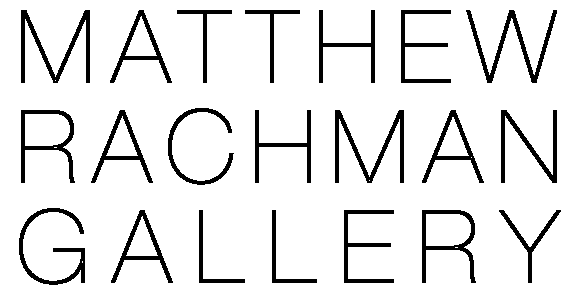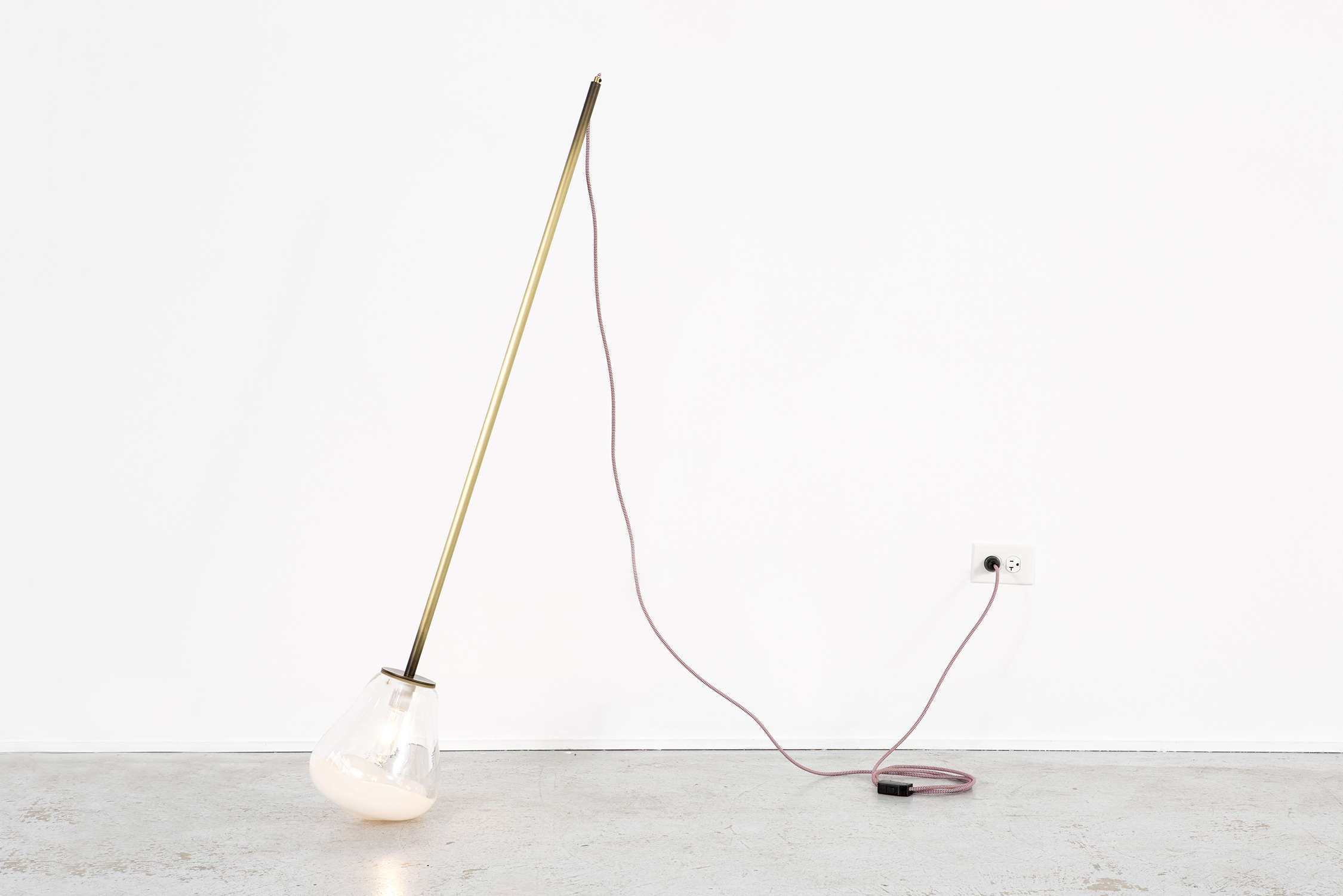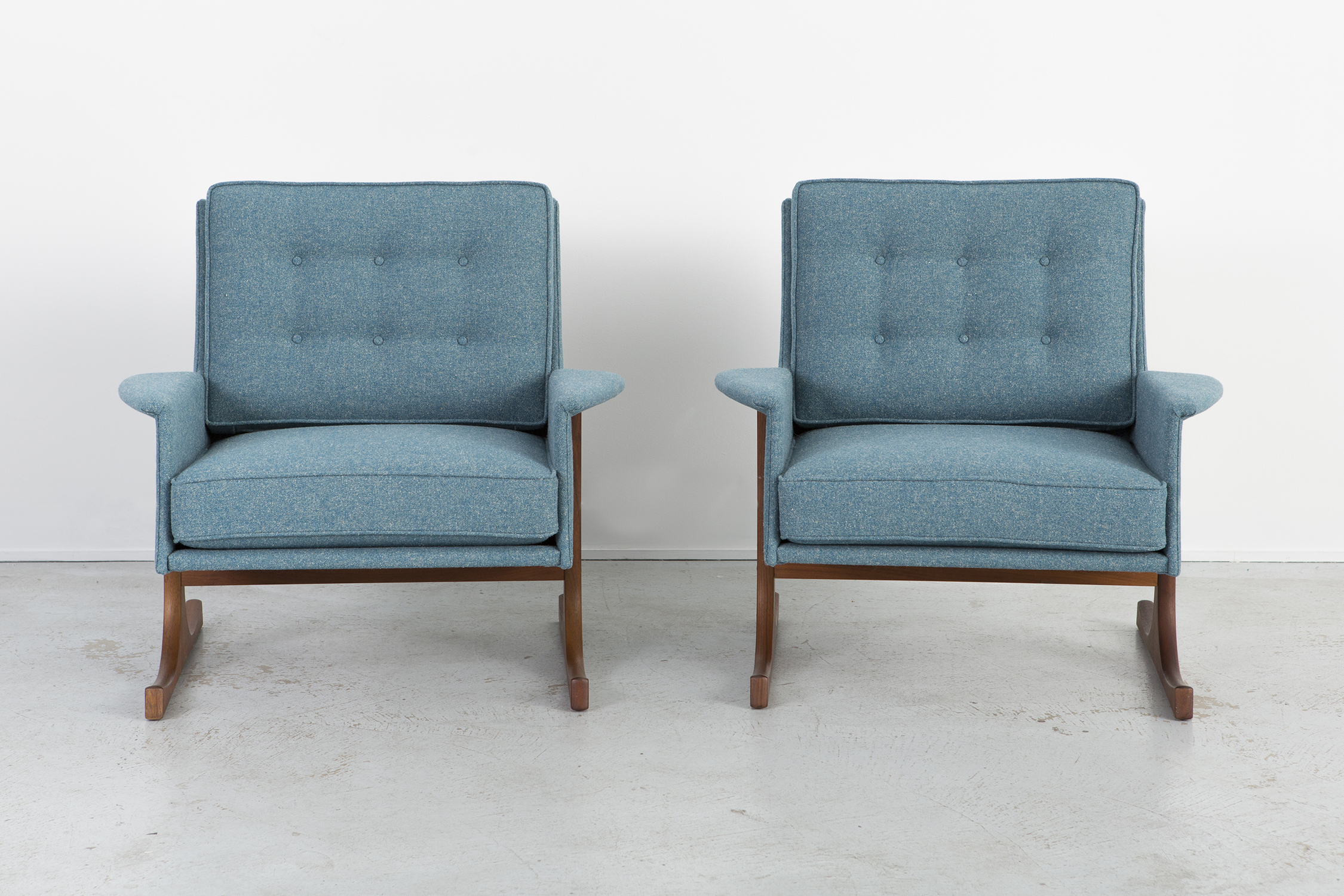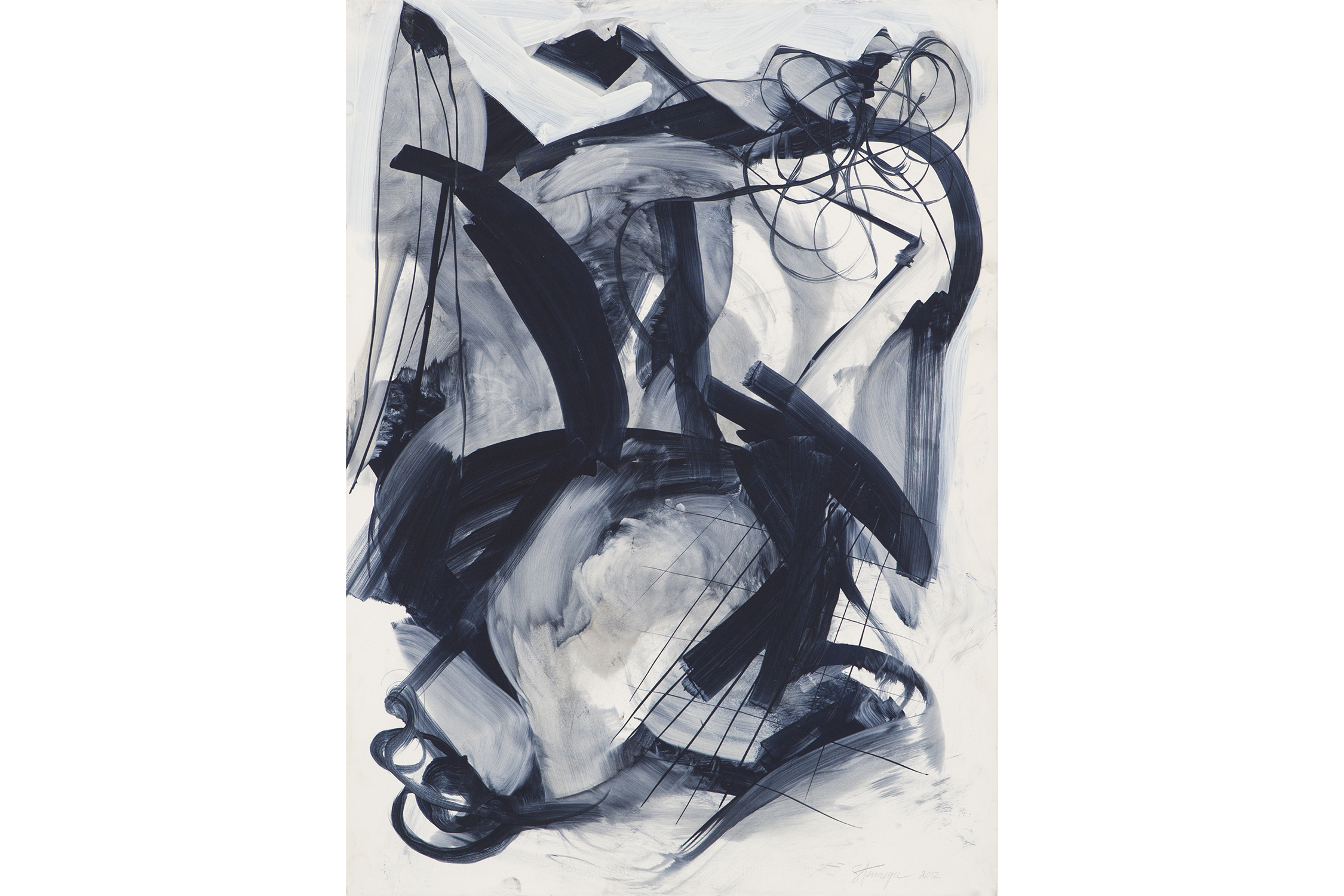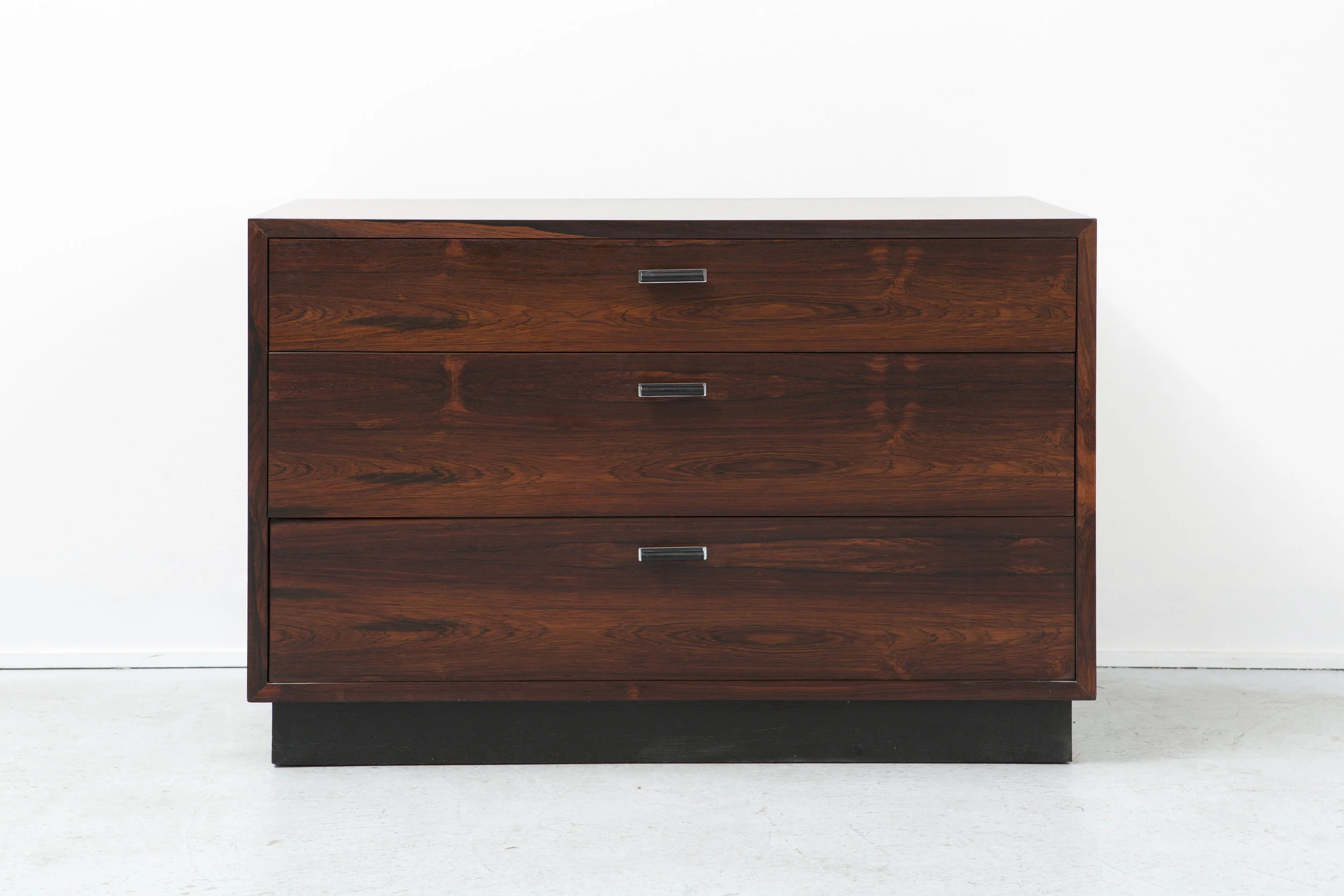LURCH BY BAILEY FONTAINE
With a focus on its production, Bailey Fontaine designed Lurch as a different approach to the floor lamp. Lurch evokes the glow of hot glass while it is being blown, and the precarity of glassblowing itself, requiring balance at each point to make the glass come out correctly. Made from hand blown glass and brass, Lurch has a custom electrical cord which gives it an midcentury feel with a contemporary edge.
SET OF NORMAN CHERNER FOR PLYCRAFT DINING CHAIRS
Norman Cherner is known for utilizing postwar innovations in technology to design wooden furniture previously impossible. However, Cherner was not alone in the bentwood era. Ray and Charles Eames, George Nelson, and others were producing bentwood furniture of their own. Most designs, however, were fragile or relied on metal support structures to take the strain of a sitter’s weight. Cherner’s design stands out for its durability and elegance. Reupholstered in italian cowhide, these chairs offer a firm seat with a satiny feel.
TIME BY CAMILLA TAYLOR
Camilla Taylor’s triptych entitled Time references both its accumulation of material and the process of making. Using offcuts of other works, Taylor adhered these pieces of paper in layers, much like the scales of fish. Her arrangement of color creates the illusion of a receding picture plane. This underscores the idea of objects receding from us in time. Featuring a subdued texture and color palette, Time is an artwork that would fit perfectly in most homes.
